Log in or create new account to save this product to your wishlist.
Banish Aphids for Good: Discover the Secrets of Aphid Control
Aphids are sap suckers, draining your plants of their valuable nutrition while stunting their growth. Find out how to tackle this little tiny creatures for good!
Latest articles
7 MIN 22 Jul How to keep your lawn in shape this summer 9 MIN 15 Jul Watering Your Garden: 10 Top Tips! 11 MIN 15 Jul Is Your Grass Type Right for your Garden? 11 MIN 10 Sep Create Your Low-Maintenance Garden – Tips and Ideas 11 MIN 08 Sep The Ultimate Guide to Choosing the Perfect Hedges for Your Garden 12 MIN 30 Aug The Top 20 Evergreen Climbers to Transform Your GardenHave you noticed the leaves on your plants curling or appearing malformed? Perhaps you’ve spotted sweet, sticky gum around your plants’ stems? Maybe your once-healthy plants are beginning to struggle. It sounds like it might be time for aphid control!
- What are aphids, and why are they a problem?
- Identifying aphids: Characteristics and signs of infestation
- Different types of aphids
- How do aphids damage plants?
- Which viruses do aphids spread?
- The relationship between aphids and ants: Do ants eat aphids?
- How to get rid of aphids permanently: Effective aphid control methods
- Aphids treatment: Natural and chemical solutions
- Preventing future infestations: Tips for aphid-resistant gardening
- Aphid aftercare: helping plants recover
- Commonly infested plants
- Aphids on plants: How to protect your favourite plants from aphids
- FAQs
- Banish aphids for good and maintain a healthy garden
Aphids, also known as greenflies or plant lice, are a common pest in gardens and can wreak havoc on your plants.
In this article, we’ll explore what aphids are, why they’re a problem, and how to get rid of them permanently. We’ll also discuss aphids treatment, aphid control methods, and tips for preventing future infestations.
Sounds good? Let’s go!
What are aphids, and why are they a problem?
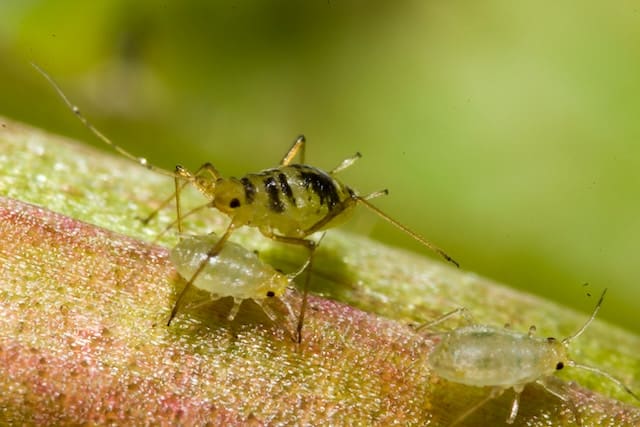
Aphids are minute, soft-bodied insects that feed on plant sap. They’re known as “sap suckers” because they use their needle-like mouthparts to pierce plant tissues and extract the sap. And this feeding method causes extensive plant damage, weakening the plant at a cellular level and even killing them.
To compound the problem, aphids are prolific breeders. ome species even give birth to live young without the need for mating (yuck!). This means that a small aphid population can quickly explode into a full-blown infestation.
And to make matters worse, aphids can transmit harmful plant viruses, further damaging your garden.
Identifying aphids: Characteristics and signs of infestation
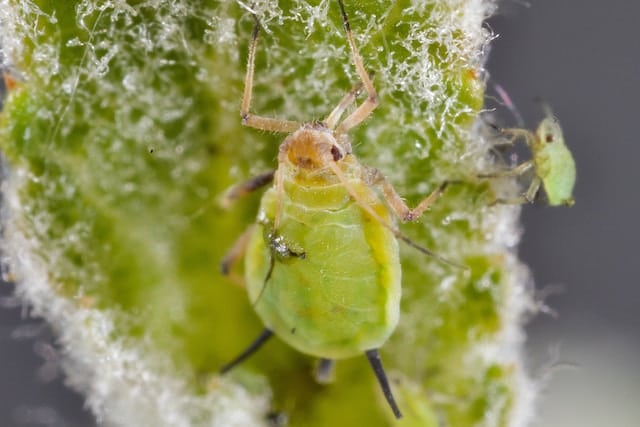
Aphids come in various colours, including green, black, brown, yellow, and even pink. They’re usually found clustered together on the undersides of leaves or on new growth, where they can feed undisturbed.
Signs that your plants may be infested with aphids include:
- Curled or distorted leaves
- Yellowing leaves
- Stunted growth
- The presence of honeydew.
Honeydew is a byproduct of aphid feeding and can attract other pests, like ants and sooty mould.
Different types of aphids
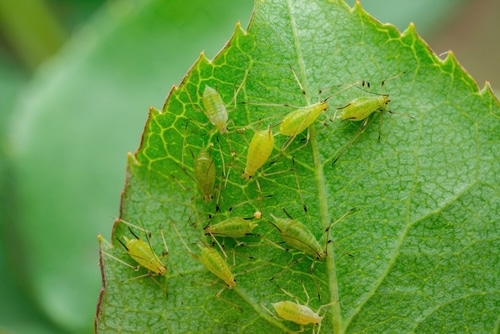
There are more than 4,000 known species of aphids worldwide, with hundreds of species known to infest plants in the UK.
However, the most common aphid species in the UK include:
- Greenfly (also known as green peach aphid or Myzus persicae),
- Blackfly (black bean aphid or Aphis fabae)
- Rose aphid (Macrosiphum rosae)
- Cabbage aphid (Brevicoryne brassicae).
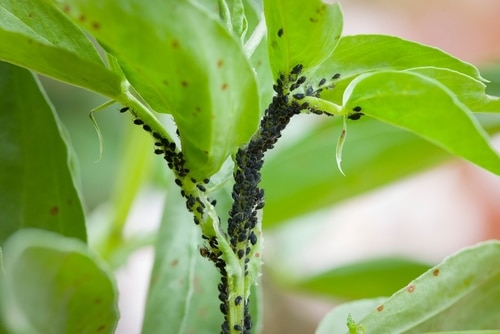
You’ll find these species on roses, vegetables, and nasturtiums in spring, summer, and early autumn; each with a preference for certain plant species, but some can feed on a wide range of hosts.
How do aphids damage plants?
As mentioned earlier, aphids feed on plant sap, which can weaken the plant and cause leaves to curl or become distorted. In addition to this direct damage, the honeydew produced by aphids can cause further issues.
Honeydew is a sugary substance that can attract ants and promote the growth of sooty mould, which covers the plant’s leaves, blocking sunlight and interfering with photosynthesis.
Aphids can also transmit plant viruses, leading to further damage or even the death of the plant.
Which viruses do aphids spread?
Aphids transmit several plant viruses, including:
- Caulimoviruses
- Closteroviruses
- Cucumovirus
- Potyviruses
Some specific examples of these viruses are:
- Cauliflower mosaic virus – a caulimovirus causing stunted growth, vein banding, mosaic patterns, and leaf lesions — most often seen on Chinese cabbage and turnips.
- Bean common mosaic virus (BCMV) and Bean common mosaic necrosis virus (BCMNV) — potyviruses causing mosaic patterns on leaves, yellowing, stunting, and necrosis (cell damage leading to tissue death), leading to significant bean crop loss.
- Cucumber mosaic virus — a highly-contagious cucumovirus that infects over 1200 species, including cucumbers, tomatoes, peppers, and various ornamentals. The virus causes mosaic patterning on leaves, stunted growth, malformed fruits, and reduced yield.
These viruses affect a wide range of common garden plants, and their transmission by aphids plays a significant role in the spread of viral infections in agricultural crops.
The relationship between aphids and ants: Do ants eat aphids?
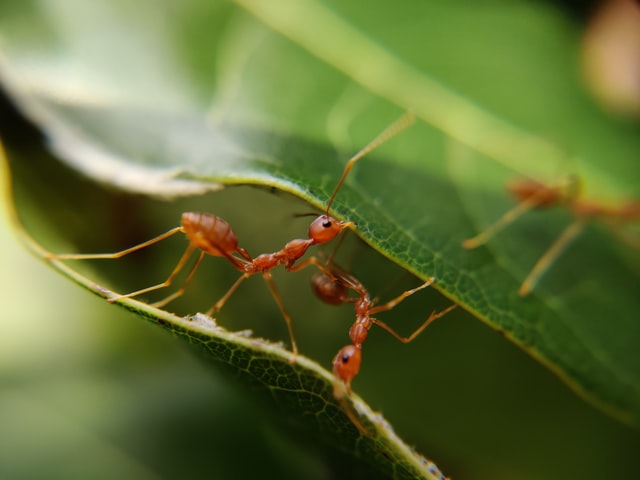
Ants have a symbiotic relationship with aphids. This means that both species benefit from their interaction. Ants don’t eat aphids; instead, they “farm” them for their honeydew.
This makes aphids a valuable resource for the ant population, which will protect their precious aphids from predators, such as ladybirds and lacewings.
Ants are even known to move their aphid farms to new plants when their current food source becomes depleted. In return, the aphids supply the ants with a steady flow of honeydew.
Find out how to clear an ant infestation if they’re damaging your plants or lawn.
How to get rid of aphids permanently: Effective aphid control methods
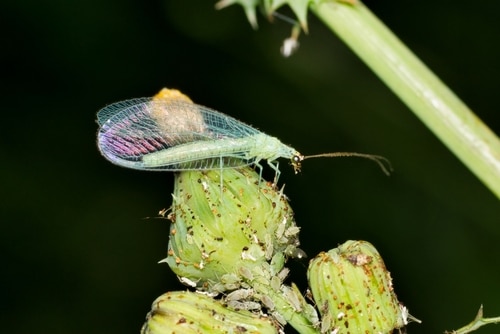
Getting rid of aphids permanently can be challenging, but there are several effective methods that you can use to keep their populations in check:
- Physical removal: Squashing aphids by hand or using a strong water spray to dislodge them from your plants can be an effective way to reduce their numbers. And don’t forget to regularly check your plants for signs of infestation. Always act quickly to prevent the aphids from multiplying.
- Beneficial insects: Introducing natural predators, such as ladybirds, lacewings, and parasitic wasps, can help to control aphid populations. These insects will prey on aphids and help to keep their numbers in check.
- Barriers and traps: Placing barriers, such as aluminium foil or sticky tape, around the base of your plants can help to prevent aphids from climbing up the stems. You can use yellow sticky traps to catch winged aphids, which can help to reduce their numbers.
- Crop rotation: Rotating your crops can help break the lifecycle of aphids, making it more difficult for them to establish a large population in your garden.
- Companion planting: Planting certain plants, such as marigolds, garlic, or onions, near your susceptible plants can help to deter aphids.
Aphids treatment: Natural and chemical solutions
There are several natural and chemical solutions available for treating aphids:
Natural solutions
Neem oil, insecticidal soap, and homemade remedies, such as a mixture of water, dish soap, and vegetable oil, can be effective in controlling aphids.
These solutions work by suffocating the aphids or disrupting their feeding.
Chemical solutions
Always try natural solutions first. But if they aren’t working, you may need to resort to chemical pesticides.
Look for products containing ingredients such as pyrethrin, malathion, or acephate. And always follow the directions on the product label and use these chemicals as a last resort.
Garden doctor Louis says:
Always try natural remedies for all garden pests before you go nuclear with harsh chemicals. Your garden is a delicate ecosystem, which you’ll damage if you use too many chemicals.
Preventing future infestations: Tips for aphid-resistant gardening
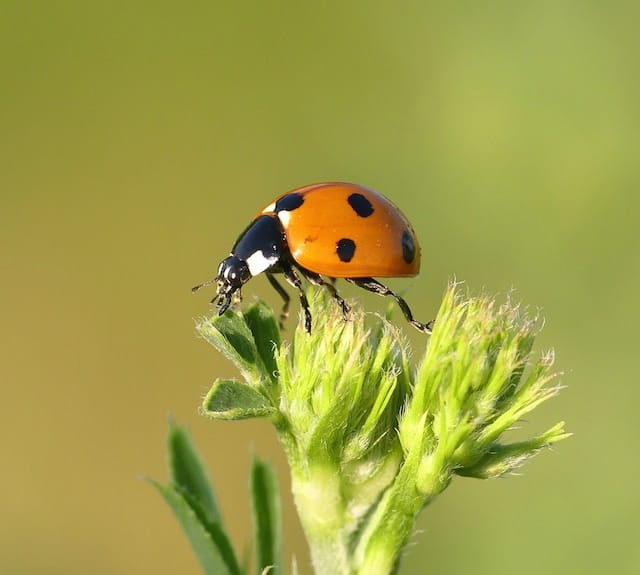
To avoid future aphid infestations, consider implementing the following tips:
Encourage beneficial insects
Plant flowers and herbs that attract aphid predators, such as ladybirds and lacewings, to help keep aphid populations in check.
Inspect plants regularly
Check your plants regularly for signs of aphids, and take action immediately if you spot any.
Keep your plants healthy
A healthy plant is less susceptible to aphid infestations. Give your plants adequate water, nutrients, and sunlight to help them stay strong and resist pests.
Prune and dispose of infested plant material
If you find aphids on your plants, prune away the infested leaves and branches, and dispose of them in the trash.
Do not compost infected plant material. This can spread aphids to other areas of your garden.
Use row covers
Covering susceptible plants with row covers can help to prevent aphids from reaching them in the first place.
Aphid aftercare: helping plants recover
After an aphid infestation, your plants may need a little extra care to recover fully. Consider the following tips:
- Water plants deeply: Water your plants deeply to help flush out any remaining aphids and their honeydew.
- Fertilise: Use a balanced fertiliser to help your plants recover from the damage caused by the aphids.
- Prune: Prune away any damaged leaves or branches to encourage new growth.
- Monitor: Keep an eye on your plants for any signs of a recurring infestation.
Commonly infested plants
While aphids can attack a wide range of plants, some are more susceptible than others. Here are a few common plants that aphids are known to infest:
- Roses
- Fruit trees, such as apple and peach
- Beans
- Tomatoes
- Cucumbers
- Squash
- Brassicas, such as broccoli and cabbage
Aphids on plants: How to protect your favourite plants from aphids
If you have a favourite plant that is particularly susceptible to aphids, there are a few things you can do to protect it:
- Isolate: Keep the plant isolated from other susceptible plants to prevent the aphids from spreading.
- Use barriers: Place barriers, such as sticky tape or aluminium foil, around the base of the plant to prevent aphids from crawling up the stem.
- Spray: Use a natural or chemical pesticide to keep aphids at bay.
FAQs
The best aphid control prevention methods include beneficial insects like ladybugs and lacewings, proper watering and avoiding over-fertilization, and companion planting with strong-smelling plants to deter pests.
Yes. Treatment options include hosing down plants to remove aphids physically, using insecticidal soaps or neem oil, applying horticultural oils, or using a homemade solution of water and dish soap. Act quickly to control aphids before they multiply and cause further damage to plants
Spray a mild solution of water and a few drops of dish soap onto leaves, stems, and fruits, or use natural solutions like neem oil. Alternatively, companion planting attracts beneficial insects, such as ladybugs and parasitic wasps, which feed on aphids and help keep their numbers in check.
Banish aphids for good and maintain a healthy garden
Aphids can be a persistent pest in your garden, but by taking the proper steps, you can keep their populations in check and prevent future infestations.
Remember:
- Regularly check your plants for signs of aphids
- Encourage beneficial insects
- Use natural or chemical pesticides as a last resort.
With these tips, you can banish aphids for good and maintain a healthy, productive garden.
Have you struggled with aphids in your garden? What methods have you used to control them?
Share your experiences in the comments below!
Any questions?
I hope you’ve got all the info you need about aphid control. But if you have any questions, check out our encyclopedia of lawn care and gardening in our Help & Advice section.
Or send us an email. We love hearing from you and will get reply promptly!
Thanks for reading!
Leave a comment
Your answer will be displayed on the site and the interested party will be notified by email.
Leave a comment
Have a question or want to share your experience? Leave us a comment.
Read more
The best tips and tricks for a lush green lawn
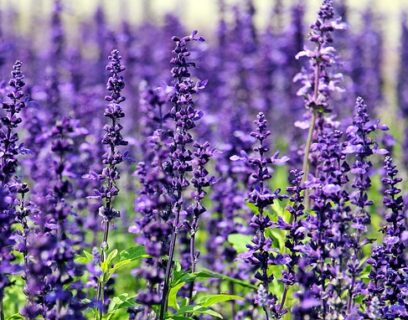 7 MIN
13 Sep
Lavender Cuttings: a step-by-step guide
7 MIN
13 Sep
Lavender Cuttings: a step-by-step guide
 11 MIN
10 Sep
Create Your Low-Maintenance Garden – Tips and Ideas
11 MIN
10 Sep
Create Your Low-Maintenance Garden – Tips and Ideas
 Scarifying Kit
All products after scarifying | Quickly restores the lawn after scarifying | Outsmart weeds quickly with the use of this kit
From: € 39.99
Scarifying Kit
All products after scarifying | Quickly restores the lawn after scarifying | Outsmart weeds quickly with the use of this kit
From: € 39.99
 Spring Lawn Care Kit
MOOWY’s choice for the spring | Quick recovery of your lawn after winter | A strong lawn prevents weeds
From: € 25.99
Spring Lawn Care Kit
MOOWY’s choice for the spring | Quick recovery of your lawn after winter | A strong lawn prevents weeds
From: € 25.99
 Long Lasting Lawn Fertiliser
Effective for 90 days | See results in 14 days! | Suitable for all types of grass and soil
From: € 13.99
Long Lasting Lawn Fertiliser
Effective for 90 days | See results in 14 days! | Suitable for all types of grass and soil
From: € 13.99
Do you want a lawn calendar?
🌱 All important maintenance moments for your lawn during the year. Leave your email and we will send you the lawn calendar for free.
Enter your email
Receive the lawn calendar in the mail
Enjoy a green lawn all year round!




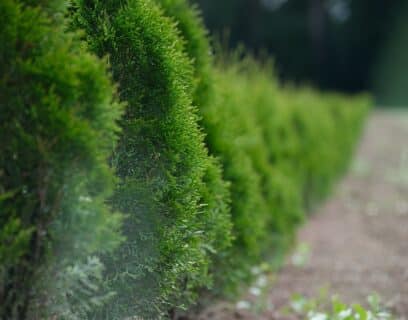






Comments (0)
There are no comments yet. Well then, what are you waiting for to
Be the first to write your comment!inaugurate this pretty page?
Do you have some comments?